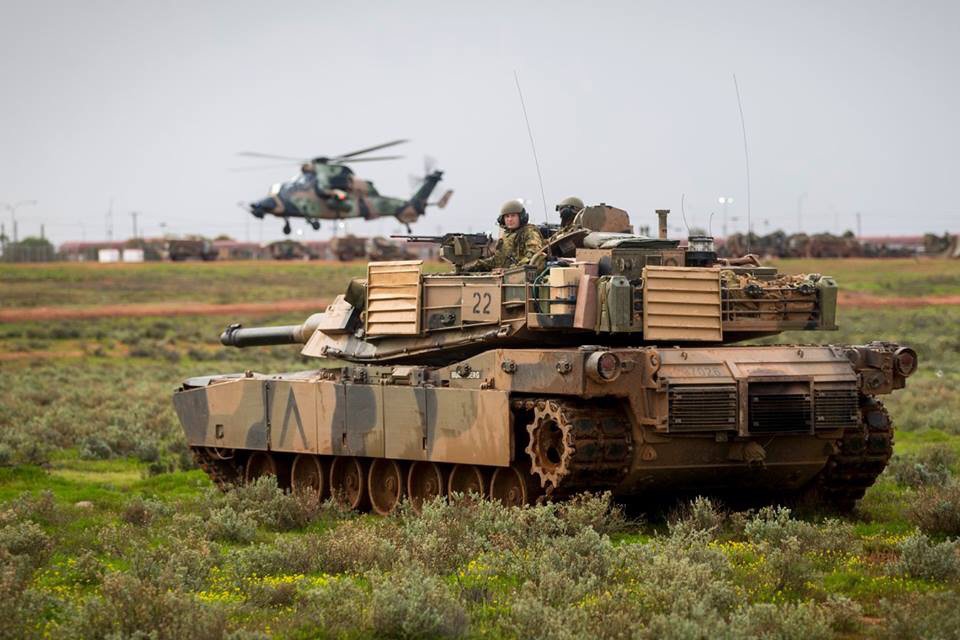
This week the Australian Army commenced its annual Exercise Hamel in South Australia. A large scale land, air, sea, info-war and cyber activity, it is ostensibly designed to evaluate the Army’s high readiness forces. This ensures the capacity of land forces to under take short notice deployments domestically and abroad for a range of potential missions. It does so through putting forces through an escalating series of scenarios encompassing stability operations, non-combatant evacuation and high-level joint Warfighting. These are observed and assessed, with lessons then being fed back into subsequent exercises as well as Army’s procurement and training continuum.
But Hamel is more than an exercise to evaluate high readiness forces. It offers a range of opportunities for the Australian Army. The aim of this article is to discuss the other areas where the Army – and the wider joint force – can derive benefit from this large, annual activity.
1. Working with our allies. While principally an Army activity, several of our allies participate in Exercise Hamel. In 2016, this international contribution includes a US Army Brigade Headquarters and units, a British battle group headquarters, a New Zealand infantry combat team and a US Marine Corps infantry battalion. The collaborative opportunities of integrating these into an Australian Division-sized task force are myriad. Different tactical techniques are shared, common operating procedures are developed, and technical interoperability is further enhanced. Importantly, the human interaction and networking conducted on Exercise Hamel provides the foundational relationships for our next operational deployments together. Finally, in working with our key allies, we demonstrate our capacity to work together and build understanding about the relative capacities of each Army involved.

2. Contemporisation of Army’s instructor work force. A professional Army lives in the school house. Education and training are core elements of a first class land force, and this is founded on an excellent instructor work force. To ensure that the instructors at Army’s training schools and centres are contemporary and well informed, many of them are dispatched on Exercise Hamel as observers. This also serves to provide a break for instructors from the high training tempo in Army schools and training centres, and allows them to see first hand the results within a collective training environment of the training conducted in their schools.
3. Exposure to contemporary warfare. While war’s enduring nature remains the same, the changing character of war necessitates constant adaptation in how we train land forces. As I recently wrote, a professional land force must study developments in contemporary (and likely future) conflict. These must then be incorporated into individual and collective training activities. Exercise Hamel offers the Army the perfect opportunity to replicate technologies, tactics and other aspects of contemporary conflict. This exposes commanders, units and soldiers to the likely demands of future deployments, while also testing the force to failure to ensure capability gaps are identified and remediated.

4. Test bed for the future. Large scale exercises such as Exercise Hamel offer the opportunity for innovation that emerges from the competitive interaction between two forces. In each Hamel, an entire Brigade is dedicated to free play operations. In preparing for Exercise Hamel, each participating Brigade seeks a competitive edge which has resulted in soldiers, NCOs and officers deriving innovative solutions for for manoeuvre, combat support, and logistic support. The exercise offers a petrie dish for innovation, with ideas being fed into the wider Army modernisation process after the activity. The robust after action reviews that are held immediately after Exercise Hamel provide an important tool in capturing and sharing innovative ideas for the wider Army and joint force.
5. Assure the government of the utility and readiness of land forces. Large scale activities such as Exercise Hamel provide the opportunity to demonstrate the capacity and utility of land forces for a myriad of tasks. This provides demonstrable proof of the readiness of the force for the breadth of operational missions that government might require it to undertake. Further, it provides an open and transparent confirmation to the people of Australia that the young people and resources that it has invested in its Army has been well spent and has provided an excellent return on investment.

The Australian Army invests a significant percentage of its Army – about one third – in the planning, execution and support – of Exercise Hamel on annual basis. Whether it is conducted at Cultana in South Australia or on the east coast of Australia, it requires a significant expeditionary capability by all forces involved. It hones to a fine edge the capabilities of the Brigade being assessed during the exercise, and exposes large elements of the Army to contemporary warfighting.
But perhaps most importantly, it is a manifestation of an important national institution that is constantly seeking an edge, or world’s best practice, in the conduct of land operations. This is a vital cultural aspect of Exercise Hamel, and reflects well on an Army that seeks to ensure it brings a potent and professional capability to the joint force.
About the author
Brigadier Mick Ryan is the Australian Army’s Director General Training & Doctrine. A graduate of Johns Hopkins University, the USMC Staff College and School of Advanced Warfare, he is a passionate advocate of professional education and lifelong learning. Follow on Brigadier Ryan on Twitter.

